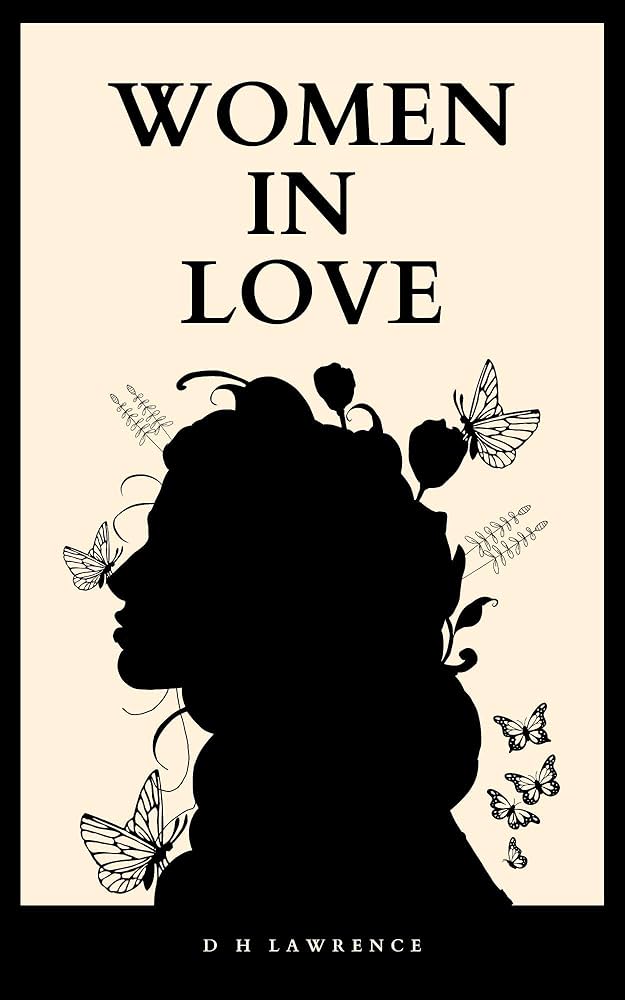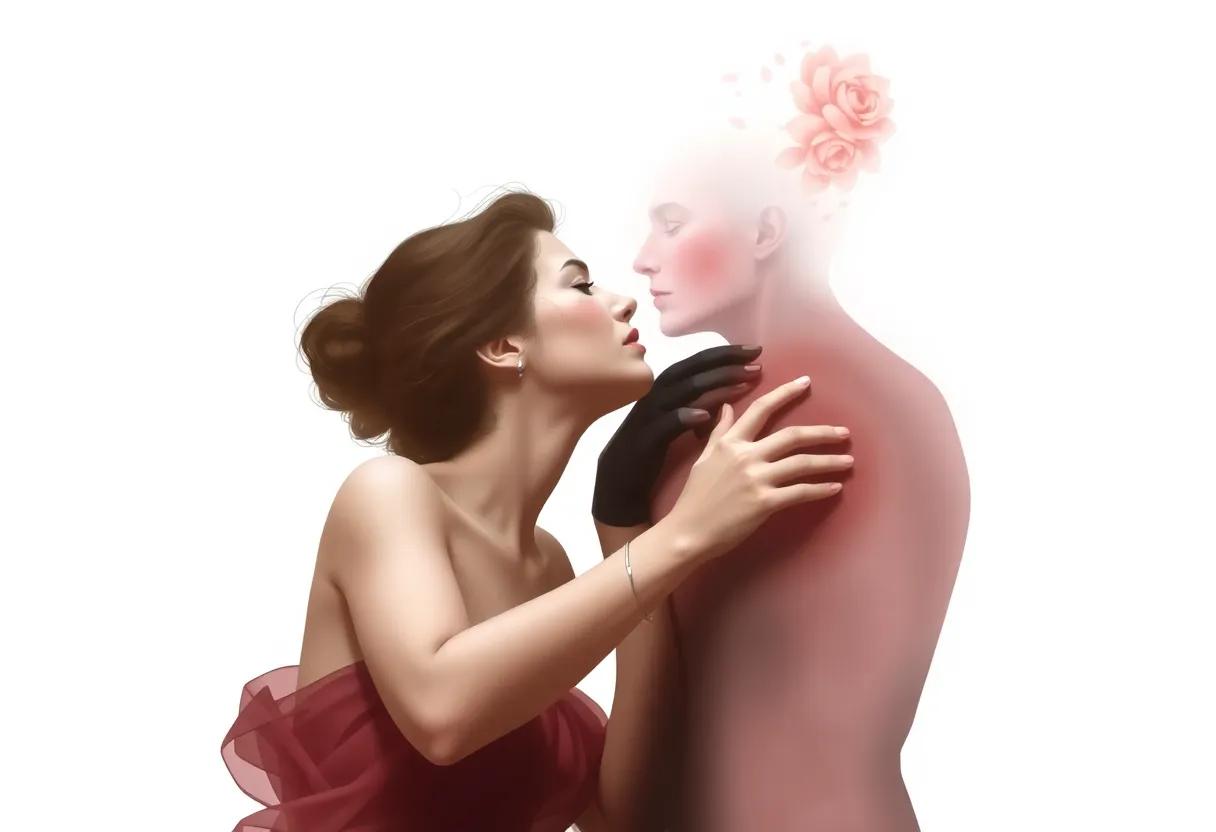In teh realm of modern literature, few authors have dared to delve as deeply into the intertwined complexities of passion and identity as D.H. Lawrence. His profound exploration of human relationships and the fervent quest for self-understanding culminates in the seminal work, “Women in Love.” As readers traverse the intricacies of love, desire, and personal discovery set against the backdrop of early 20th-century England, they are invited to reflect on their own identities amidst societal expectations. In this review, we will unpack the nuanced characters and themes that define Lawrence’s narrative, illuminating how “Women in Love” not only captivates through its vivid prose but also challenges us to confront the very essence of who we are in the pursuit of connection and authenticity. Join us as we embark on a journey through the labyrinth of love and self-exploration within this timeless classic.
The Intricate Tapestry of Desire and Self-Discovery in women in Love
D.H. Lawrence’s “Women in Love” intricately weaves together the complex interplay of passion, emotional landscape, and self-identity, notably as experienced by its female protagonists. The narrative delves into how love transcends mere physical attraction, becoming a powerful impetus for introspection and growth. As Ursula and Gudrun navigate their desires, they are faced with profound questions about their roles as women in a rapidly changing society. The exploration of their relationships with men, especially with characters like gerald and birkin, reveals not just romantic entanglement, but also a journey towards understanding their own identities and aspirations. Key themes emerge from their struggles and triumphs, including:
- Feminine Agency: The pursuit of love is intertwined with a quest for personal liberation.
- Conflict and Reconciliation: The tension between desire and societal norms challenges traditional gender roles.
- Conversion: Each woman’s journey illustrates the transformative power of love, urging self-discovery.
Through richly drawn characters, Lawrence crafts a landscape where desire serves as both a catalyst for conflict and a pathway for self-realization. As the novel unfolds, it becomes clear that the act of loving others prompts profound inner changes. This notion is emphasized in a visual table showcasing the duality of relationships that shape the women’s identities, illustrating how each relationship informs their self-perception. The dichotomy of love and autonomy proves essential for understanding their evolution, resulting in:
| Relationship | Impact on Self-Discovery |
|---|---|
| Ursula and Birkin | Mutual exploration ignites personal ambitions. |
| Gudrun and Gerald | Desire clashes with independence, sparking conflict. |
Character dynamics: A Deep Dive into Lawrence’s Portrayal of Love and Conflict
D.H. Lawrence intricately weaves the threads of love and conflict through his characters, illuminating the complex interplay between desire and identity. The relationships in Women in Love are not just romantic entanglements; they are battlegrounds where personal philosophies clash and evolve. Central to this exploration is the tension between the passionate pursuits of Ursula and Gudrun Brangwen, who navigate their identities as they seek fulfillment in a rapidly changing world.The depth of their desire often stands in stark contrast to the constraints of societal norms, sparking both intense connection and painful discord. Their quests for meaning invite readers to reflect on how love can be both a melding of souls and a source of profound conflict.
Moreover, the dynamics between characters serve as a microcosm of broader societal tensions. The men in their lives, Gerald Crich and Bill Lawrence, bring forth themes of masculinity and control, often clashing with the women’s pursuit of autonomy. This friction lays bare the raw vulnerabilities and insecurities that each character embodies.Lawrence captures these conflicting elements beautifully, suggesting that the path to understanding oneself is fraught with strife.To better illustrate this intricate dynamic, consider the table below, which outlines key character traits and their impact on relationships:
| Character | Traits | Impact on Relationships |
|---|---|---|
| Ursula Brangwen | Innovative, Passionate | seeks emotional depth, provokes conflict |
| Gudrun brangwen | Independent, Observant | Challenges traditional roles, creates tension |
| Gerald Crich | Dominant, Introspective | Embodies conflict between power and vulnerability |
| Bill Lawrence | Supportive, Passive | Acts as a contrasting force to strong female characters |
The Role of Nature: Symbolism and Its Impact on Identity in Women in Love
In D.H. Lawrence’s “Women in Love,” nature serves as an influential backdrop, intricately woven into the characters’ journeys of self-discovery and emotional expression. The rich landscapes mirror the complexities of the characters’ inner lives, where mountains symbolize stability and strength, while rivers represent fluidity and change. The juxtaposition of these elements highlights the tension between societal expectations and personal desires. The presence of nature not only enhances the narrative but also acts as an extension of the protagonists’ identities, reflecting their evolving relationships with themselves and each other.
The novel immerses readers in the profound connection between the characters’ experiences and the natural world, further emphasizing the theme that identity is shaped by more than just societal norms. This relationship manifests in various ways, including:
- Individual Growth: Characters frequently find clarity and insight within the natural environment.
- Emotional Resonance: Specific landscapes evoke deep feelings that inform the characters’ decisions and relationships.
- Symbolic Interactions: Encounters with nature frequently enough coincide with pivotal moments of transformation.
As the narrative unfolds, it becomes evident that the characters’ identities are inextricably linked to the natural elements surrounding them, illustrating Lawrence’s belief in the profound effect of nature on the soul. Like the landscape, the characters navigate through love, conflict, and desire, each grappling with their sense of self against the backdrop of an ever-changing world.
Exploring Gender Expectations: Lawrence’s Commentary on masculinity and Femininity
D.H. lawrence’s exploration of gender expectations in “women in Love” reveals the complex interplay between masculinity and femininity during the early 20th century. His characters grapple with societal norms, challenging traditional roles and expectations that frequently enough confine them. Lawrence does not shy away from portraying the intricacies of male identity,showcasing how societal pressure can distort authentic masculinity. Birkin, for instance, embodies a modern man who seeks to redefine his masculine identity outside the constraints of conventional expectations. He is in constant tension with Gibreel, whose traditional masculine traits frequently enough lead to conflict rather than understanding, highlighting a profound critique of the rigid definitions of gender roles that stifle personal connection.
On the flip side, lawrence dives deep into the essence of femininity, portraying female characters that embody strength, vulnerability, and complexity.Ursula and Gudrun are not mere representations of women; they are fervent individuals navigating their desires and identities in a male-dominated world.Their journeys reflect a rejection of passivity, as they embrace their passions and assert their presence. The dualities of strength and vulnerability manifest in various forms, suggesting that femininity is not monolithic but rather a spectrum of experiences that resist conventional categorization.This juxtaposition is pivotal in understanding lawrence’s commentary on how both genders are shaped by, and often limited by, societal expectations, ultimately revealing the need for an authentic expression of self beyond predefined binaries.
Artistic Expression: the Significance of Creativity in Personal Relationships
In D.H. Lawrence’s “Women in Love,” the intricate tapestry of relationships unfurls, revealing how artistic expression serves as a vital conduit for exploration and understanding. Each character, a vessel of passion and identity, epitomizes the complex dynamics that creativity fosters within relationships. Through Lawrence’s vivid prose, we witness how love becomes a medium through which characters communicate their deepest desires, vulnerabilities, and aspirations. The symbolic use of art and creativity not only reflects their inner lives but also challenges the rigid constructs of societal norms, suggesting that true connection often demands the courage to express the inexpressible.
The novel juxtaposes individual and collective experiences, portraying how creativity enriches personal bonds. Characters like Gudrun and Ursula Brangwen embody the intersection of personal struggles and artistic endeavors, highlighting the potency of creativity in navigating emotional landscapes. Through their artistic pursuits, they find autonomy and self-definition, reinforcing the idea that authentic expression can both unify and alienate. As moments of creation become intertwined with moments of intimacy, Lawrence invites readers to reflect on how the act of creating—be it through painting, writing, or other forms—can ignite passion and foster profound connections, breathing life into the essence of relationships.
| character | Artistic Expression | Impact on Relationships |
|---|---|---|
| Gudrun Brangwen | Painting | Challenges societal norms, fosters independence |
| Ursula Brangwen | Writing | Explores self-identity, enhances emotional connections |
| Gerald Crich | Industrial Art | Embodies conflict between passion and duty |
Psychological Depth: Understanding the Complexities of Lawrence’s Characters
D.H. Lawrence delves into the intricate psyches of his characters, crafting a narrative that radiates the tension between passion and identity. Within ‘Women in Love’, the protagonists are not mere reflections of societal norms; rather, they embody the internal struggles that define human experience. Each character grapples with their desires,fears,and aspirations,illustrating the profound complexities of individual identity in the face of convention.The relationships in the novel serve as a crucible for self-discovery, highlighting the ways in which love can both liberate and entrap. Here, Lawrence invites readers to explore the nuances of emotional intimacy and the challenge of self-revelation.
Moreover, the contrasting personalities of Gudrun and Ursula Brangwen provide a captivating study in psychological depth. As they navigate their intertwined journeys, one can observe the broader themes that resonate throughout the novel, such as the conflict between personal fulfillment and societal expectations. Consider the following traits that define their characters:
| Character | Traits |
|---|---|
| Gudrun Brangwen |
|
| ursula Brangwen |
|
This intricate portrayal of both characters raises essential questions about gender roles, the complexity of love, and the search for authenticity. ultimately, Lawrence’s exploration into the psychological depth of his characters does not provide clear answers, but rather challenges readers to reflect on their own identities and the passionate pursuits that shape them. The dynamic interplay of their internal and external lives sets the stage for an insightful dialog about the multifaceted nature of human relationships.
Themes of Freedom: The Balance Between Individuality and Relationship Bonds
In D.H. Lawrence’s Women in Love, the intricate dance between individuality and interpersonal relationships manifests itself through the lives of the characters, each striving for their own identity while vying for connections with others. The novel exposes the tension between the desire for personal freedom and the instinctive need for emotional bonds. The characters embody this struggle, leaning into their passions yet frequently enough finding these desires clash with their commitments to one another. The portrayal of relationships suggests a complex web where affection both nurtures and restrains, showcasing how the pursuit of self can impact the shared human experience.
Central to this exploration are key themes that illuminate the dichotomy of individuality versus relationship ties:
- Passion vs. Complacency: Characters like Ursula and Gudrun grapple with their intense desires while navigating societal expectations.
- connection vs. Isolation: The interplay of close relationships often leaves characters feeling both supported and confined.
- Self-Discovery vs. Sacrifice: The quest for personal identity frequently necessitates a delicate negotiation with emotional investments in others.
| Character | Individual Struggle | Relationship Dynamic |
|---|---|---|
| Ursula | Yearning for autonomy | Bound by love for birkin |
| Gudrun | Challenging societal norms | conflict with Gerald |
| Birkin | Pursuit of freedom | connection with Ursula |
| Gerald | Strife between duty and desire | Turbulent bond with Gudrun |
Cultural Context: How Early 20th Century Britain Shapes the Narrative
In the wake of industrialization and the shifting social landscapes of early 20th century Britain, D.H. Lawrence’s Women in Love emerges as a vivid exploration of the tensions that defined this transformative period. The narrative intertwines the personal and the political, illustrating how the profound changes in society affected individuals’ passions and identities. Amidst the backdrop of burgeoning capitalism and social reform, characters grapple with their desires and the constraints imposed by traditional roles. This struggle mirrors the wider societal shifts, as the clash between modernity and tradition becomes a crucible for exploring intimacy and self-actualization. Key factors influencing these narrative threads include:
- The Rise of the Suffragette Movement: Women seeking autonomy shaped character arcs and conflicts.
- Industrialization: The contrast between the natural world and mechanized society questions human connections.
- Psychological Exploration: Lawrence delves into the deep, frequently enough tumultuous emotions that govern relationships.
The societal backdrop also finds expression in the characters’ journeys, as they navigate love, sexuality, and the quest for meaning. Lawrence’s vivid imagery and symbolic landscapes serve to illuminate the characters’ inner lives against the harsh realities of the time. The tensions between male and female identities reveal the impact of social expectations,challenging convention while embodying the spirit of an age ripe with contradiction. This complexity is captured in a simple illustration of the novel’s main themes:
| Theme | portrayal |
|---|---|
| Love | Intense emotional connections against societal norms. |
| Identity | Personal and shared identity explored through relationships. |
| Conflict | Interpersonal tensions reflective of larger societal struggles. |
readers’ Recommendations: Why Women in Love Deserves a Place on Your shelf
D.H.Lawrence’s Women in Love is not merely a novel; it is an exploration of the complex duality of love and identity that reverberates through the corridors of time. With vivid characterizations and intricate emotional landscapes, this book provides an unfiltered lens into the lives of two sisters, Gudrun and Ursula, as they navigate their passionate relationships with Gerald and Birkin. Readers are invited to reflect on profound themes such as the struggle between individualism and societal expectations, making it particularly relevant for contemporary discussions about gender roles and personal autonomy. The contemporary relevance of the novel can be seen in its portrayal of relationships that challenge conventions, appealing to modern readers who value stories of empowerment and complexity.
Suggested reasons to add this classic to your bookshelf include:
- Rich Character Growth: the characters possess flaws and virtues that make them relatable and profoundly human.
- Timeless Themes: Issues of love, desire, and identity are universal, allowing new generations to connect with the text!
- Stunning Prose: Lawrence’s writing style is beautifully crafted, making each page a piece of art.
- Intellectual Depth: the novel invites analysis and reflection, making it a great choice for book clubs and discussions.
To appreciate the different dimensions of Women in Love, consider the following thematic exploration:
| Theme | Description |
|---|---|
| Love and Passion | Explores the intensity and tumult of romantic relationships. |
| Individualism vs. Society | Challenges norms that define gender and relationships. |
| Existential Inquiry | Characters grapple with the meaning of existence and fulfillment. |
The Influence of Lawrence’s Life: Biographical Insights that illuminate the Story
Lawrence’s tumultuous upbringing in the industrial heart of England undeniably shaped his worldview and literary voice.The conflicts within his family, juxtaposed against the backdrop of the working-class struggles in Nottinghamshire, fueled his exploration of love, sexuality, and the human condition. Key aspects of his biography that find resonance in ‘Women in Love’ include:
- Industrial Environment: The stark realities of life in a coal mining town prompted lawrence to interrogate the impacts of industrialization on relationships and society.
- Complex Familial Relationships: Lawrence’s strained relationship with his parents often surfaces in the dynamics between characters, reflecting struggles for connection amidst familial expectations.
- Artistic Rebellion: His rejection of conventional norms and embrace of passionate individualism parallels the characters’ journeys, revealing the deep well of dissatisfaction in societal roles.
Understanding the events that shaped Lawrence’s identity illuminates the intense emotional landscapes woven throughout the narrative. The novel serves as a mirror to his life experiences, where themes of existential pursuit and romantic entanglement echo the author’s personal endeavors. Notably, the following table illustrates some of the pivotal biographical events and their thematic correlates in ‘Women in Love’:
| Biographical Event | Thematic Correlation |
|---|---|
| Childhood in a mining town | Conflict between social class and personal identity |
| Strained relationships with family | Exploration of love and emotional estrangement |
| Literary success in a changing society | Rebellion against societal norms and conventions |
Critical reception: How Women in Love Has Been Viewed Through the Years
Since its publication in 1920, D.H. Lawrence’s Women in Love has sparked a multitude of interpretations and critiques, cementing its place as a polarizing classic in English literature. Early reviews were often torn between admiration for Lawrence’s bold exploration of gender dynamics and sexuality, and condemnation for his perceived radicalism. Critics frequently noted the novel’s rich psychological depth, lauding its intricate character studies, particularly of the sisters Ursula and Gudrun Brangwen. Over the decades, feminist critics have embraced Women in Love for its nuanced portrayal of women’s desire and autonomy, while others have scrutinized Lawrence’s treatment of female characters, arguing that it reflects a deeply flawed understanding of gender relations.
As social and cultural contexts have evolved, the novel’s significance has shifted accordingly. In contemporary discourse, Lawrence’s work is often examined through the lenses of modern sexuality and identity politics. Reviews from recent years highlight the novel’s complex tapestry of love, passion, and the human condition, alongside a recognition of its historical context. Readers and scholars frequently note the dichotomy of the characters’ relationships, which illustrates profound questions about connection and individuality. The ongoing analysis of Women in Love reveals how its thematic concerns remain relevant, prompting discussions about love that transcend time, encouraging both admiration and critique throughout its enduring legacy.
Emotional Resonance: connecting with Lawrence’s Themes of Love and Pain
D.H. Lawrence’s “Women in Love” delves deep into the intertwined nature of love and pain, providing a profound exploration of how these emotions shape human existence. The narrative captures the intensity of relationships, not shying away from the turbulent realities that often accompany genuine affection. characters like Ursula and Gudrun Brangwen embody the struggle to find their identities amidst a backdrop of passion and conflict. Their journeys present a vivid tableau of the emotional landscape where love can be both a source of ecstasy and a catalyst for suffering. This duality challenges readers to consider how deeply entwined our desires are with our fears, ultimately questioning the very essence of emotional fulfillment.
As the characters navigate their tumultuous connections, Lawrence masterfully evokes empathy and introspection in his audience. The pain they endure serves not only as a testament to their desires but also as a mirror reflecting our own struggles in understanding love. The portrayal of relational dynamics is rife with tension and contradictions, where affection can swiftly turn into anguish. Some key themes resonate throughout the text:
- The Complexity of Human Emotions: Acknowledges that love is rarely straightforward.
- Conflict and Resolution: Showcases how pain can lead to personal growth.
- Identity and Individuality: Highlights the characters’ quest for self-discovery through relational experiences.
This rich emotional canvas invites readers to reflect on their own lives, igniting a personal journey that parallels the characters’ struggles. The resultant reflection leads to a greater understanding of how intertwined love and pain are, challenging the notion that these feelings can be separated in our pursuit of fulfillment.
A Lasting Legacy: D.H. Lawrence’s impact on Literature and the Exploration of Self
D.H. Lawrence’s literary prowess transcends time, leaving an indelible mark on the landscape of modern literature.His exploration of passion, identity, and the complexity of human relationships invites readers to delve deeply into the intricacies of self-discovery. In Women in Love, he unveils the tension between societal expectations and personal desires, a theme that resonates strongly in both contemporary and classic contexts. Through characters like Ursula and Gudrun, Lawrence crafts a narrative that challenges the status quo, encouraging individuals to embrace their authentic selves and confront the limitations imposed by society. His vivid depictions of raw emotions and turbulent relationships stimulate an examination of one’s inner world, promoting a greater understanding of the self amidst external pressures.
The impact of Lawrence’s work extends beyond mere storytelling; it serves as a catalyst for introspection and personal growth. By portraying the struggles and epiphanies of his characters, he inspires readers to reflect on their own identities and relationships.Notably, his use of language and imagery creates a visceral experience that compels one to engage with profound questions of existence. Key themes in his writing include:
- The Nature of Love: An exploration of romantic and platonic bonds.
- Individual vs. Society: The struggle for personal authenticity in a conformist world.
- Gender Dynamics: A critique of traditional roles and gender expectations.
This intricate web of themes laid the groundwork for future literary exploration, where the boundaries of self-definition continue to be challenged. Lawrence’s legacy endures as a foundational voice that not only understood the human condition but also urged future generations to boldly question and articulate their own identities.
The Conclusion
D.H. Lawrence’s “Women in love” serves as a profound exploration of the intricate interplay between passion and identity. Through the lens of his richly drawn characters, he invites readers to reflect on the complexities of human relationships and the search for self amid societal constraints. As we navigate the intricate landscapes of love, desire, and individualism, Lawrence provides not only a narrative of the early 20th century but also timeless questions about the nature of human connection. His lyrical prose demands our attention, urging us to consider how passion can illuminate the path to understanding our true selves. In delving into the labyrinthine depths of intimacy and individuality, ”Women in Love” remains a compelling testament to the enduring struggle for personal fulfillment. Whether you’re familiar with Lawrence’s work or encountering it for the first time, this novel promises to leave an indelible mark on your perception of love and identity.















